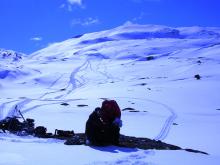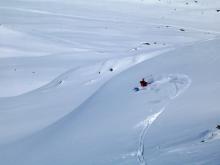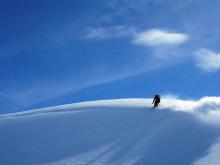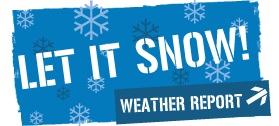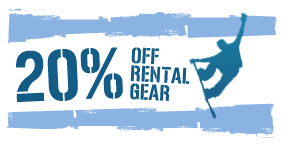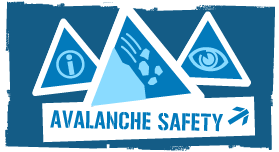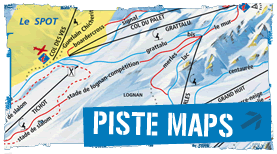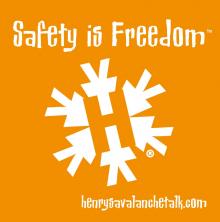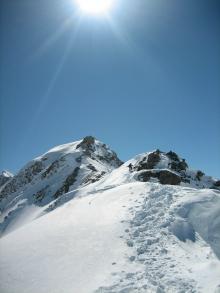Guiding
Off Piste skiing
So you fancy some backcountry skiing and shredding? Being away from the crowds, feeling the thrill of owning the mountain?
Then you’ll be pleased to know that Tignes has broad horizons for the experienced skier and snowboarder to explore! The Espace Killy’s highest point is on the Grande Motte at 3656m. This means that there is limited scope for extreme angles or huge vertical drops. In general most recognised routes offer a descent ranging between 500 and 900m.
It is more popular than ever to “go off piste” and it is a luxury to find untracked descents. Luckily for us, Tignes has kept its name as a top off-piste resort. With its large number of lifts a skier can traverse one mountain range to another with relative ease, meaning that you are only limited by the quality of snow and your own ability.
It is important to understand, however, that as much fun as it looks, going off piste can be dangerous and should only be attempted by those who know what they are doing! We strongly recommend a great deal of training and education before you even think of heading off on your own! Information for which can be found in our Avalanche Safety section.
Things to know
Skiing in powder is vastly different to skiing on the pisted runs. It is important not to be over-confident, as there are very real dangers in this harsh environment. A certain amount of preparation is needed to minimize the risks of going off piste. We advise you to hire a guide and take an avalanche safety course.
Before going off piste make sure that the area you are heading into isn’t restricted. Often resorts are nestled in a national park, where it may be forbidden to ski in certain areas. (This applies particularly in America where the penalty for getting caught is either a heavy fine or the confiscation of your lift pass).
Always check the avalanche board before heading out. This can help you make an educated decision on heading out.
However This DOES NOT mean that if the risk level is low, that it won’t avalanche! Always plan your route and if at all possible buy an off-piste book for the area; it will be a great source in how to avoid dangers as well as helping you to get the most out of your runs for the least effort. Always go in a group, preferably 3-6 persons all of similar ability, that way in case there is an accident someone is at hand to help. And if possible it is advised that you tell someone of your intended destination and estimated timings.
Make sure you have all the proper avalanche saftey equipment, including transceivers (incl spare batteries), collapsible shovels and avalanche probes. In case the worst does happen and one of your party gets caught in an avalanche these items are essential to the rescue attempt. More details on avalanching and avoidance can be found in our In Depth section, and in particular the Mountain Saftey and Avalanche articles.
There is always a risk when one ventures off piste. Around 120 people die in avalanches every year. So every effort has to be taken to minimize the risk to you and your fellow skiers. Which is why for the last few winters we have been riding with and attending courses from Henry's Avalanche Training.
Lastly, check on your insurance details. A lot of skiing policies don’t cover off piste. And rescues in the backcountry don’t come cheap.
We know it's a lot of information to take in, but if, after all that, you are still interested in riding off-piste, then please take a look at our pages on Snowfall & Conditions, Mountain Awareness, Lessons & Training and Equipment Tips. We update these sections throughout the winter in connection with Henry's Avalanche Talks.


